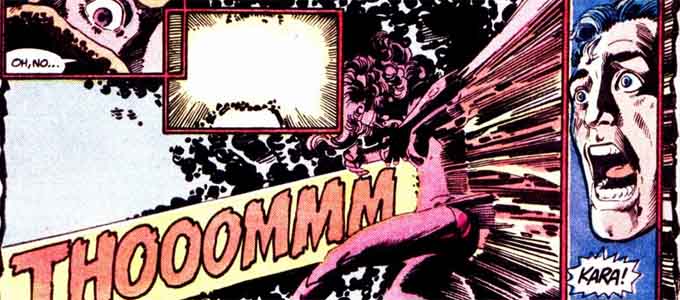This page may contain one or more affiliate links, which means that if you purchase a product through that link, I may receive compensation. The links will be identified with the text "affiliate link". Click to learn more.
I will be talking about the original version of Crisis on Infinite Earths from 1985. The version that made the story a classic. But here is the thing though: I have no idea why. I mean sure, it gets good near the end when they are fighting the… umm… Anti-Monitor … but beyond that, it is long, dragging, boring story made for one purpose only: to simplify the multiple DC Universes into one, single, coherent world.
Now, as often is with comic book universes, this may be a bit hard to follow, so bear with me. The story is as follows: There are many different variations of the universe, and for some reason, they are being destroyed. The Monitor, some powerful guy who is assumed to be bad, does a good deed by bringing together heroes from multiple earths in order to help save the universe. He also put these giant vibrational fork things on each earth to connect them together or something.
Long story short, the Monitor dies and his evil counterpart, the Anti-monitor, has to be dealt with to save all the universes. So the mightiest heroes travel to stop him, including Superman, Supergirl, Captain Marvel, etc. This takes place in the final Issue, which is really all you need to read, because the other issues are basically fluff. Do yourself a favor and just read the first and last few issues.
It is pretty well known that the death of Supergirl is in Crisis On Infinite Earths, so I hope I am not spoiling anything by saying so. I mean, it’s only on the cover of the comic, so it’s no huge secret. The death of Supergirl came to be in issue 7, while Kara being in an environment that made her, as well as Superman, vulnerable while attacking the Anti-Monitor. While trying to save Superman, the Anti-Monitor blasted her and then escaped into space.
Of course, she was not the only one to die. A ton of major characters died in this series. The Flash, Green Arrow, Huntress, Robin, and a million others. And why not, right? There were two copies of most heroes at this point, due to Earth 1 and Earth 2 combining, so DC Comics had nothing to lose by doing this.
The drawings in this series are sometimes difficult to understand, because they are so detailed and tiny. The coloring is often poor, and panels are sometimes wordy. It is not the best story, but it is undeniably a classic (Affiliate Link) that a true comic fan would be proud to hold in their hands.
The Controversy
This is the DC comic book event that has been at the center of many debates since it was published in 1985. It stands out among the most audacious and pioneering story arcs that have ever happened in comic books, and it has enjoyed its moments of both adulation and dissent from fanatics and critics alike. However, what makes it one of these strongly disputed points? Let us now delve into some of the reasons why it became such a contentious subject.
It can be argued that the size of the event is the major determinant of the event’s contentiousness. Crisis On Infinite Earths was not merely an inter-title crossover, but a full-fledged shared universe that ran through nearly every DC character in existence. It was a bold move by DC to try to shoehorn their completely convoluted and contradictory multiverse into a single connected continuity. There were fans who thought this was a good idea and were happy about it, but there were others who did not want their favorite characters and storylines messed up.
The decision to kill off multiple characters, including long-time fan favorites, also added to the controversy surrounding the story. The deaths of iconic heroes such as Supergirl and the Flash shocked readers and sparked debates about the impact of these deaths on the future of the DC universe. Many saw it as a cheap gimmick to boost sales, while others praised the writers for taking such bold risks.
Also, the retconning of pre-existing continuity and characters was not only unfamiliar to fans but also provoked rage among them. The story tried to make the DC universe simpler by deleting some events and giving a new image to heroes. Such decisions were criticized by fans who loved earlier versions of these characters and storylines. It also posed dilemmas regarding comic book storytelling, where it has been believed that continuity is essential.
The incorporation of deus ex machina through the Monitor and the Anti-Monitor did not help in settling the debates about Crisis On Infinite Earths either. The abrupt emergence of these higher beings and their involvement in annihilating the multiverse was considered a cliche move by many. It also provoked inquiries about the strength estimations of some heroes, their agency, etc.
Moreover, the outcome of Crisis On Infinite Earths and how it affected the DC universe brought about some divisions among viewers. While the event sought to streamline the DC universe, it also left space for upcoming retcons and reboots, thus laying a never-ending cycle of continuity twists. These made fans feel doubtful and lost about what lay ahead in terms of their most liked heroes and plots.

